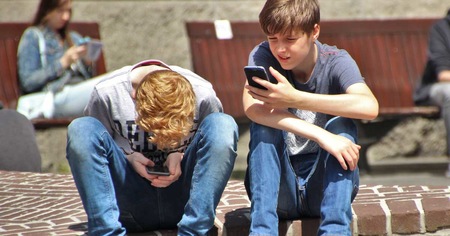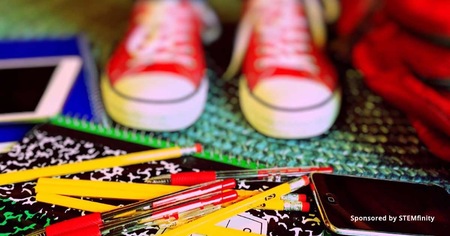A general misconception is that spatial thinking is a fixed biological skill that you are either born with or not. This is simply not true: Research shows that spatial thinking is a learned skill that can be improved with practice.
Spatial thinking is generally important, because we all have to successfully navigate around our three-dimensional world and determine things—like whether we can fit all of our groceries into one bag or two. However, spatial aptitude is specifically important in our modern world as we try to help young people develop the skills that they will need for success in the STEM-related careers of tomorrow.
Spatial thinking skills are essential for success in STEM fields. Spatial thinking is used when engineers design bridges, when chemists visualize molecules, when a surgeon has to navigate around a human body, or when an astronomer turns data into a visualization of a new planet.
Research has shown that spatial aptitude is a strong predicator of a young person's potential for success in STEM fields.
The goal of helping young people develop spatial aptitude is made more important when viewed against the increasing use of two-dimensional screen time in young people's lives. Young people today are spending less time moving around and manipulating objects, and more time in front of flat screens.
Unfortunately, spatial thinking is rarely directly developed in formal schooling. Afterschool programs, with their small group instruction and less formal curriculum, are uniquely placed to add spatial-thinking development as part of a hands-on approach to STEAM education. With just a tiny bit of focus, afterschool programs can use their everyday approach to existing STEAM activities to provide great opportunities for experiential, spatial-thinking development and add to the content already being taught.
It is important in any STEAM education program to understand what spatial thinking is.
SPATIAL THINKING SKILLS INCLUDE:
- Translating from one dimension to another, as in creating two-dimensional maps from three-dimensional environments.
- Physically or mentally combining shapes to make new shapes.
- Navigating, wayfinding and map reading.
- Scaling and proportions.
- Moving in space.
- Visualizing object-related problems, such as how many blocks will fit in a box.
- Perspective or understanding how different locations can give different views of an object.
- Designing structures and objects.
- Diagramming information, problems and puzzles.
- Estimating size and proportions.
- Mental rotations and transformations of objects.
- Locating objects and remembering locations.
- Comprehending visual forms of data.
- Using nonverbal reasoning.
- Realizing distance properties, such as adjacency, proximity or similarity.
- Comprehending orientation and direction.
- Recognizing systems of landmarks that anchor one's cognitive maps.
ACTIVITIES AFTERSCHOOL PROGRAMS CAN USE TO DEVELOP SPATIAL THINKING:
- Encourage active, physical exploration of the real world. Use activities and games that get young people moving around. Implement activities that encourage young people to explore and navigate a safe space, such as exploring nature or creating a treasure map.
- Emphasize spatial language in everyday activities. There are clear links between spatial intelligence and spatial vocabulary. It is easier for young people to grasp a concept when they have the right vocabulary. Use words that describe locations and spatial relationships. Instead of telling a group that you are putting an object away, tell them that you are going to place it at the front of the middle shelf. Stimulate spatial thinking by engaging young people in conversation and asking them questions, such as: Will all the toys fit in one bag? Which shapes do I make if I cut the apple a different way? How many blocks do I need to make a bridge? The goal is to encourage young people to think about space and movement. Focus on using spatial descriptive words like over and under, tall and short, bent and curvy, or triangle, rectangle, cube and sphere.
- Use STEAM activities that provide opportunities for young people to build structures. From bridges and towers to group Rube Goldberg machines, cooperatively creating structures using different materials provides young people a great way to incorporate a bundle of spatial-thinking skills in experiential learning.
- Implement STEAM experiments that engage young people in hands-on experiences. Many STEAM activities—such as making slime, designing a Mars Rover, and using tangrams and puzzles—can easily be implemented with a focus on spatial-thinking skill development. STEAM activities should incorporate use of manipulatives whenever possible.
- Encourage the use of visualization skills to better understand and solve problems. Allow young people to share how they visualize problems and solutions and emphasize the importance of using the imagination when problem solving. Visualization can help with reading, writing, mathematics and science.
Written by Andy the Science Wiz, NAA STEM Specialist, Andy Allan.




